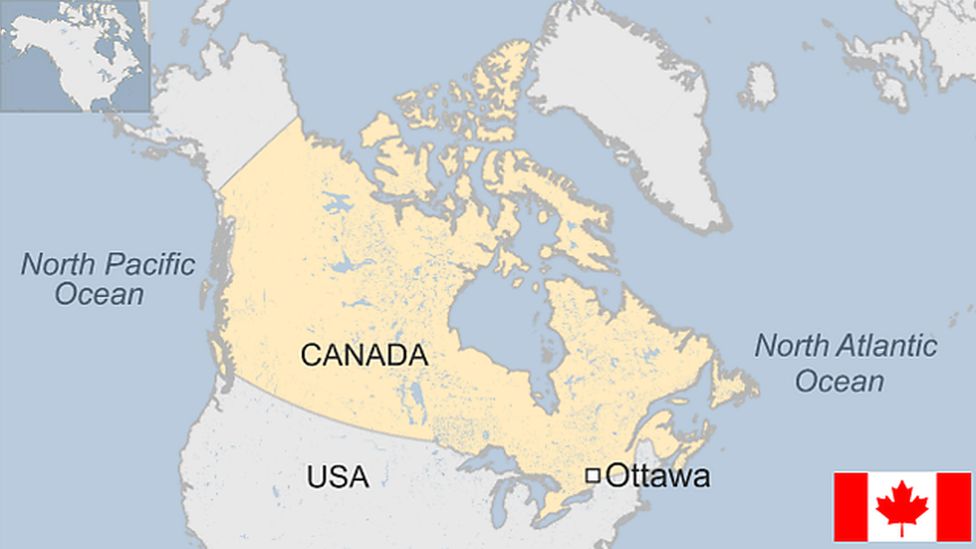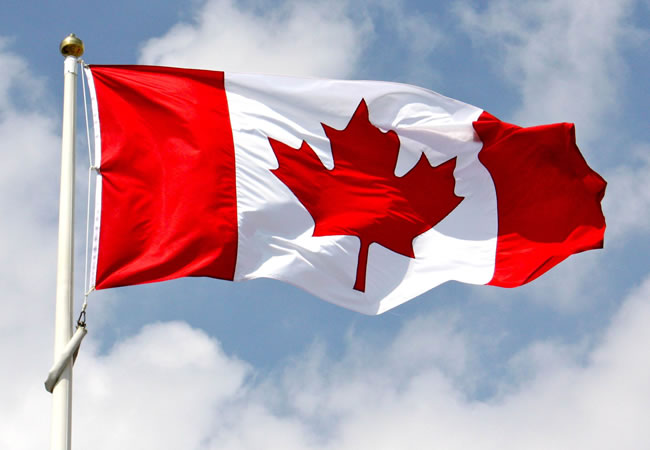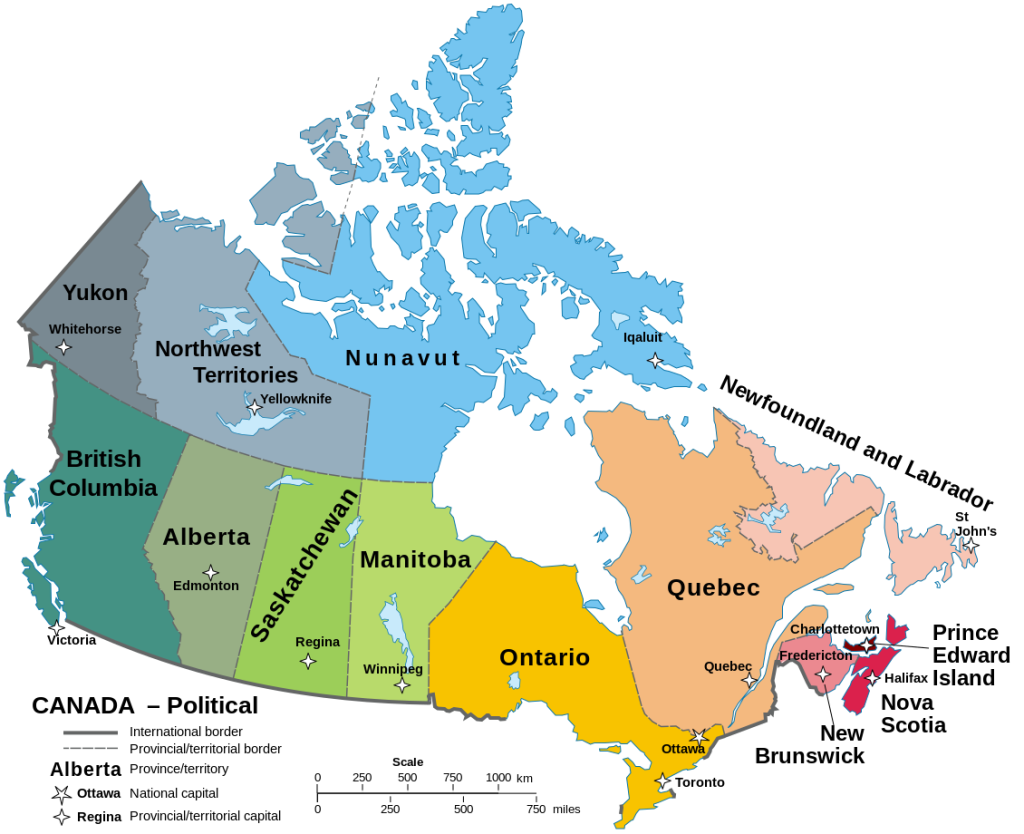Ever wanted to know the differences between the Canadian Provinces and Territories?
Canada is a vast and diverse country, with 10 provinces and 3 territories that have their unique characteristics and cultural identity.
While provinces and territories may seem similar in many ways, there are significant differences between the two. This article will explore the differences between Canadian provinces and territories in detail.
What Are Canadian Provinces
Provinces are the primary political subdivisions of Canada, and they have more autonomy and self-governance than territories. There are 10 provinces in Canada, each with its own distinct culture and economy. Provinces have a wide range of responsibilities, including managing their own healthcare, education, and social services, and administering their own taxes.
Provinces also have a more significant role in Canada’s political system, as they are represented in the House of Commons based on their population size. The provinces are also responsible for electing their own representatives to the Senate, the upper house of the Canadian Parliament.

Canadian Territories
Territories are less populous and less developed regions of Canada, with less self-governance than provinces. There are three territories in Canada – the Yukon, Northwest Territories, and Nunavut – and they are all located in the northern part of the country. Unlike provinces, territories do not have their own constitution, and they are governed by the federal government in Ottawa.
Territories have a smaller population than provinces, and they are more sparsely populated. This means that they have fewer resources and infrastructure than provinces, and they rely more heavily on federal funding for their operations. Territories are also not represented in the Senate, and they have only one representative in the House of Commons.
In this article you’ll learn more about the differences between Canadian Provinces and Territories.
7 Differences Between Canadian Provinces and Territories
Canada is a vast country that is divided into ten provinces and three territories. While they share many similarities, there are some important differences between provinces and territories. Here are some of the key differences:
- Legal Status: Provinces are considered sovereign entities within Canada, while territories are not. Provinces have their own constitutions, while territories are governed by federal legislation.
- Government: Each province has its own elected government, headed by a premier, while territories are governed by appointed commissioners.
- Population: Provinces tend to have much larger populations than territories. Ontario and Quebec, for example, each have over 8 million residents, while the three territories combined have a total population of just over 100,000.
- Size: Territories tend to be much larger in land area than provinces. Nunavut, for example, is the largest territory, with an area of over 2 million square kilometers, while Prince Edward Island is the smallest province, with an area of just over 5,600 square kilometers.
- Economy: Provinces generally have more developed economies than territories, with a wider range of industries and higher levels of employment. For example, Ontario is home to a thriving manufacturing industry, while Alberta has a large oil and gas sector.
- Natural Resources: Territories are known for their rich natural resources, including minerals, oil, and gas, as well as unique ecosystems and wildlife. Provinces also have natural resources, but they tend to be more diversified and include forests, fisheries, and agriculture.
- Indigenous Peoples: Territories are home to a significant proportion of Canada’s Indigenous population, including Inuit, First Nations, and Métis peoples. Many Indigenous peoples in the territories continue to live traditional lifestyles and have unique cultural practices.
In summary, while there are many similarities between provinces and territories in Canada, there are also important differences in terms of legal status, government, population, size, economy, natural resources, and Indigenous peoples.
Related: The 11 Official Languages in South Africa
Cultural Differences
The provinces and territories of Canada are also distinct from one another in terms of culture and identity. Provinces like Quebec and Newfoundland and Labrador have strong cultural identities that are rooted in their history and geography. Quebec, for example, has a distinct French language and culture, while Newfoundland and Labrador has a strong maritime culture.
Territories, on the other hand, have a unique Indigenous culture and heritage, which is closely tied to the land and the environment. Many Indigenous people live in the territories, and they have a significant influence on the culture and way of life in these regions.
Economic Differences
Provinces and territories also differ in terms of their economies. Provinces like Ontario and Alberta have large and diverse economies that are driven by sectors like manufacturing, technology, and energy. These provinces are also home to large urban centers like Toronto and Calgary, which attract talent and investment from around the world.
Territories, on the other hand, have smaller and more resource-dependent economies. The territories have vast natural resources, such as minerals and oil and gas, which play a significant role in their economies. These resources are often located in remote and challenging environments, which can make their extraction and development more challenging.

Related: The 9 Provinces in South Africa and Their Capital Cities
Names of Canadian Provinces and Capitals
Here’s a table listing the names of the 10 Canadian provinces and their capitals:
| Province | Capital |
|---|---|
| Alberta | Edmonton |
| British Columbia | Victoria |
| Manitoba | Winnipeg |
| New Brunswick | Fredericton |
| Newfoundland and Labrador | St. John’s |
| Nova Scotia | Halifax |
| Ontario | Toronto |
| Prince Edward Island | Charlottetown |
| Quebec | Quebec City |
| Saskatchewan | Regina |
Here’s a table listing the 3 Canadian territories and their capital cities:
| Territory | Capital |
|---|---|
| Yukon | Whitehorse |
| Northwest Territories | Yellowknife |
| Nunavut | Iqaluit |
Map of Canadian Provinces and Territories

Conclusion (Difference Between Canadian Provinces and Territories)
In summary, while Canadian provinces and territories may seem similar in some ways, there are significant differences between the two. Provinces have more autonomy and self-governance, and they are more populous and developed than territories. They also have unique cultural identities and economies that reflect their history and geography.
Territories, on the other hand, are more dependent on federal funding, and they have a distinct Indigenous culture and heritage. Understanding these differences is important for anyone who wants to gain a deeper understanding of Canada and its people.
More Topics:





